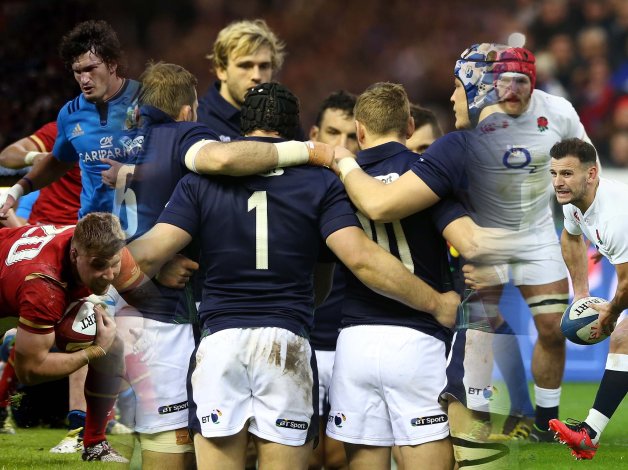
England finish off the Six Nations with their first Grand Slam since 2003.
England completed a fantastic RBS 6 Nations Grand Slam on Saturday night in Paris by beating France 21-31. The game in Paris completed an incredible Six Nations Super Saturday which saw 193 points scored across all the matches with a staggering 21 tries scored!
Only last October, Eddie Jones’ men were left dejected after failing to reach the knockout stages of the tournament on their own soil, but a stunning return to form in this year’s Six Nations has boosted their confidence, lifting them to fourth place in the world rankings. England’s Grand Slam victory is even more remarkable considering it is their first since 2003, during which long time rivals Wales have secured three.
Let’s now dive in and take a look at how this year’s Six Nations unfolded:
How did the turnaround happen?
From the first game, England looked re-energised, motivated and driven, battling to a 9-15 victory over Scotland at BT Murrayfield Stadium. It was clear the team had something to prove after letting the nation down after their catastrophic and record breaking World Cup exit.
A further confidence boost was the comprehensive 9-40 win over Italy at Stadio Olimpico before clinching the Six Nations with a hard-earned 25-21 victory against Wales at Twickenham.
As expected, Wales were England’s main rivals throughout the tournament. Led by some inspirational performances from up-and-comer Rob Evans, the Red Dragons were on form for much of the competition, only losing out to England in a closely-fought tie and drawing with Ireland.
France and Ireland, two teams that always expect to challenge for the title will be disappointed they couldn’t achieve more after reaching the quarter-finals of the World Cup, but this was undoubtedly England’s time to shine.
Who were the stars of the tournament?
This year’s tournament saw some exceptional individual performances from members of all teams. Anthony Watson, Billy Vunipola and Mario Itoje were among England’s top players, while Chris Robshaw quashed any questions about his quality by regaining his form, this time playing at 6.
Other stars included Scotland’s John Hardie, France’s Guilhelm Guirado and Wales’ Jamie Roberts, who was a shining light for the team, displaying amazing consistency both in attack and defence. Jamie Roberts was back up by great performances from the likes of Dan Biggar and George North - two players who nearly crushed England's Grand Slam hopes.
Finally, Owen Farrell’s incredible kicking along with his mature performances proved pivotal across the tournament, particularly against Wales where his six penalties were vital in completing a landmark victory despite many critics suggesting that 12 is not his best position.
What’s next?
After England’s big win, France, Wales, Italy, Scotland and Ireland will all now be evaluating their performances and trying to work out what went wrong.
For Italy, it’s back to the drawing board after losing all five of their games and being beaten comprehensively by England, Wales and Ireland. The Azzurri show glimpses of great rugby, but all in all, did not live up to expectations this year and big changes may be needed.
On the other hand, Scotland, Ireland and France have some positives to look back on after picking up two wins each, but they will surely be disappointed they could not pose a bigger threat to England and Wales. We expect these three teams to come out fighting in 2017.
As for Wales, the 16-16 draw against Ireland will be reflected on as a missed opportunity. Otherwise, they played well in the tournament and were unlucky in a thrilling 25-21 loss to England, who will now be looking to continue their form when they meet Wales at Twickenham on May 29th.

